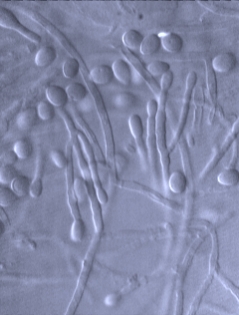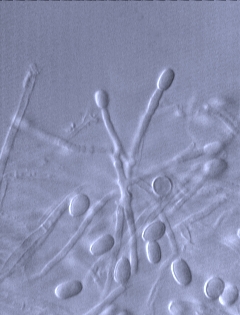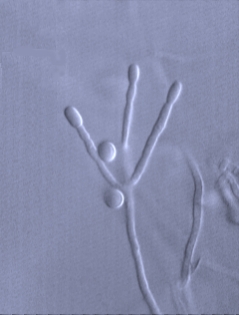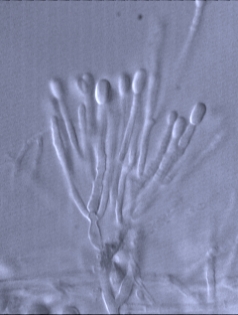Main page <> Index of descriptions <> Previous description <> Scedosporium <> Next description
Scedosporium




Spore-bearing cells may be solitary or united into more complex brush-like structures. Conidia are borne at the apices of cells with irregularly elongated necks and widely separated annellations. The conidia are generally flattened at the point of attachment and occur in wet masses. The spore-bearing structures are sometimes united into complex synnemata referrable to the genus Graphium.
Species of Scedosporium can cause a variety of diseases in humans. Mostly they affect people with compromised immune systems, but healthy individuals may also become infected. Cultures of all Scedosporium species should be treated with caution.
The species occur in soil, decaying plant matter or dung. They can become exceedingly abundant in some situations, such as in piles of feed-lot manure.
Classification: Microascaceae. Holomorphs: Petriella and Pseudallescheria.